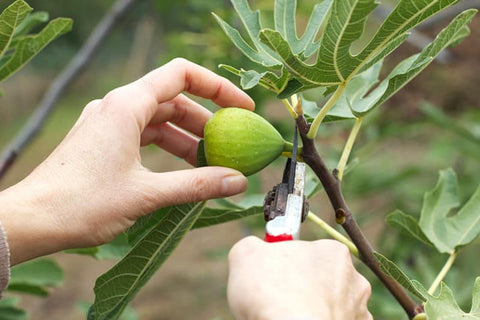Plant enthusiasts know all too well the frustration of discovering fungal infections in their beloved greenery. Whether you're nurturing a thriving garden or tending to indoor houseplants, fungal diseases can wreak havoc on your plant's health and vitality. In this comprehensive guide, we'll delve into the world of preventing and treating fungal infections in your plants, equipping you with the knowledge and strategies to safeguard your green oasis.

Introduction to Plant Fungal Infections
Understanding Fungal Infections
Fungal infections are caused by various types of fungi that thrive in moist, warm environments. These microscopic organisms can infiltrate plant tissues, causing a range of symptoms from unsightly leaf spots to devastating rot.
Common Types of Fungal Infections in Plants
From powdery mildew to root rot, plant fungal infections come in a variety of forms, each with its own set of symptoms and treatment requirements. Understanding the specific type of fungal infection affecting your plants is crucial for effective management.
Prevention Strategies for Plant Fungal Infections
Proper Plant Care Practices
Maintaining optimal plant health through proper watering, fertilization, and pruning is the first line of defense against fungal infections. Healthy plants are better equipped to resist and recover from fungal attacks.
Environmental Factors Affecting Fungal Growth
Environmental conditions such as humidity, temperature, and air circulation play a significant role in fungal development. By modifying these factors, you can create an environment less conducive to fungal proliferation.
Cultural Practices to Minimize Fungal Infections
Implementing cultural practices like crop rotation, proper spacing, and mulching can help prevent fungal infections by reducing fungal spore buildup and promoting overall plant vigor.
Identifying Symptoms of Plant Fungal Infections
Visual Cues of Fungal Infections
Keep a keen eye out for common symptoms of fungal infections, including discolored or distorted leaves, powdery white or gray growth, and wilting or decay.
Signs of Fungal Infection Progression
Fungal infections can spread rapidly if left unchecked, leading to extensive damage and potential plant loss. Monitor your plants closely for signs of infection progression, such as spreading lesions or stunted growth.
Differentiating Fungal Infections from Other Plant Diseases
While fungal infections share some similarities with other plant diseases like bacterial or viral infections, they often exhibit distinct symptoms that can help with accurate diagnosis and treatment.

Treatment Options for Plant Fungal Infections
Organic Fungicides
Organic fungicides derived from natural substances like neem oil, copper, or sulfur can effectively combat fungal infections while minimizing harm to beneficial organisms and the environment.
Natural Remedies for Fungal Infections
Explore natural remedies such as baking soda solutions, garlic sprays, or diluted hydrogen peroxide for controlling fungal infections in a non-toxic manner.
Integrated Pest Management Approaches
Adopt an integrated approach to fungal disease management by combining cultural practices, biological controls, and chemical interventions as needed for comprehensive control.
Soil Management to Prevent Fungal Infections
Importance of Soil Health
Healthy soil is the foundation of a thriving garden and plays a crucial role in preventing fungal infections. Ensure proper drainage, aeration, and organic matter content to promote soil health and suppress fungal pathogens.
Soil-Borne Fungal Pathogens
Certain fungi reside in the soil and can infect plants through their roots, causing diseases like damping-off or root rot. Maintaining balanced soil microbiology and avoiding waterlogged conditions can help prevent soil-borne fungal infections.
Soil Amendments to Suppress Fungal Growth
Incorporate organic amendments like compost, biochar, or beneficial microbes into the soil to create an environment hostile to fungal pathogens while enhancing plant nutrition and resilience.
Air Circulation and Humidity Control
Impact of Air Circulation on Fungal Infections
Poor air circulation can create stagnant, humid conditions ideal for fungal growth and spread. Enhance air movement around plants through strategic positioning, pruning, or the use of fans to reduce fungal disease risk.
Managing Humidity Levels
Maintain moderate humidity levels in your growing environment to discourage fungal proliferation. Use dehumidifiers, proper ventilation, or humidity monitors to regulate indoor humidity levels effectively.
Ventilation Techniques for Preventing Fungal Infections
Promote airflow in greenhouses, indoor spaces, and outdoor gardens to minimize humidity buildup and create an inhospitable environment for fungal pathogens. Strategic placement of vents, doors, and windows can facilitate natural ventilation and reduce fungal disease pressure.
Pruning and Plant Hygiene
Removing Infected Plant Parts
Promptly remove and dispose of infected plant parts to prevent the spread of fungal spores to healthy tissues. Prune affected branches, leaves, or stems using sanitized tools to minimize further contamination.
Sterilizing Pruning Tools
Regularly sanitize pruning tools with alcohol or a bleach solution to prevent cross-contamination between plants and minimize the risk of spreading fungal infections.
Promoting Plant Hygiene to Prevent Fungal Spread
Practice good plant hygiene by removing fallen leaves, debris, and weeds from the growing area to reduce fungal inoculum and create a clean, disease-free environment for your plants.

Companion Planting for Fungal Disease Prevention
Plants That Deter Fungal Pathogens
Certain plants possess natural compounds or aromas that repel fungal pathogens, making them valuable companions for disease prevention in the garden.
Companion Planting Strategies
Strategically interplant disease-resistant species or aromatic herbs among susceptible crops to create a protective barrier against fungal infections and promote overall plant health.
Beneficial Plant Associations for Fungal Disease Prevention
Encourage symbiotic relationships between plants and beneficial microbes or fungi that can suppress soil-borne pathogens and enhance plant immunity to fungal infections.
Natural Fungal Antagonists
Beneficial Microbes
Inoculate soil with beneficial microorganisms like mycorrhizal fungi or Trichoderma species to establish a competitive advantage against pathogenic fungi and promote plant health.
Fungal Antagonistic Plants
Select and cultivate fungal antagonistic plants like marigolds, garlic, or chives that release natural compounds or exude root exudates that deter fungal pathogens.
Harnessing Natural Predators for Fungal Control
Encourage the presence of natural predators like predatory nematodes, mites, or insects that feed on fungal pathogens and help keep their populations in check.
Environmental Management Practices
Managing Moisture Levels
Monitor and adjust irrigation practices to maintain optimal soil moisture levels and prevent waterlogged conditions that can favor fungal growth and disease development.
Shade Management
Provide appropriate shading for susceptible plants to reduce stress and minimize the risk of fungal infections, especially during periods of intense sunlight or high temperatures.
Temperature Control
Maintain moderate temperatures in indoor and outdoor growing environments to discourage fungal proliferation and create conditions conducive to plant health and vitality.

Prevention in Greenhouse Settings
Greenhouse Sanitation
Maintain cleanliness and hygiene in greenhouse structures, equipment, and growing containers to prevent the buildup and spread of fungal pathogens.
Air Circulation in Greenhouses
Install fans, louvers, or ventilation systems to promote airflow and reduce humidity levels inside greenhouses, creating an environment less favorable for fungal growth.
Temperature and Humidity Control in Greenhouses
Monitor and regulate temperature and humidity levels within greenhouses using thermostats, heaters, evaporative coolers, or shade cloth to create optimal growing conditions and minimize fungal disease risk.
Conclusion: The Importance of Vigilance and Proactive Measures Against Plant Fungal Infections
In conclusion, preventing and treating fungal infections in your plants requires a multi-faceted approach that encompasses proper plant care, environmental management, and proactive disease prevention strategies. By understanding the underlying causes of fungal diseases and implementing preventative measures, you can protect your plants from harm and enjoy a healthy, thriving garden year-round. Stay vigilant, stay informed, and let your green thumb lead the way to success!









